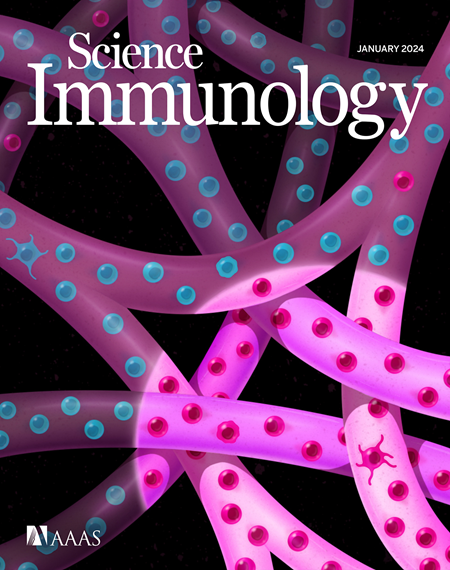GFI1B specifies developmental potential of innate lymphoid cell progenitors in the lungs
IF 17.6
1区 医学
Q1 IMMUNOLOGY
引用次数: 0
Abstract
Tissue-resident innate lymphoid cells (ILCs) play a vital role in the frontline defense of various tissues, including the lung. The development of type 2 ILCs (ILC2s) depends on transcription factors such as GATA3, RORα, GFI1, and Bcl11b; however, the factors regulating lung-resident ILC2s remain unclear. Through fate mapping analysis of the paralog transcription factors GFI1 and GFI1B, we show that GFI1 is consistently expressed during the transition from progenitor to mature ILC2s. In contrast, GFI1B expression is limited to specific subsets of bone marrow progenitors and lung-resident ILC progenitors. We found that GFI1B+ lung ILC progenitors represent a multi-lineage subset with tissue-resident characteristics and the potential to form lung-derived ILC subsets and liver-resident ILC1s. Loss of GFI1B in bone marrow progenitors led to the selective loss of lung-resident IL-18R+ ILCs and mature ILC2, subsequently preventing the emergence of effector ILCs that could protect the lung against inflammatory or tumor challenge.
GFI1B 可指定肺部先天性淋巴细胞祖细胞的发育潜能。
组织驻留的先天性淋巴细胞(ILCs)在包括肺部在内的各种组织的前线防御中发挥着至关重要的作用。2型先天性淋巴细胞(ILC2)的发育依赖于GATA3、RORα、GFI1和Bcl11b等转录因子;然而,肺驻留型ILC2的调控因子仍不清楚。通过对同源转录因子 GFI1 和 GFI1B 的命运图谱分析,我们发现 GFI1 在 ILC2 从祖细胞向成熟 ILC2 过渡的过程中持续表达。相反,GFI1B 的表达仅限于骨髓祖细胞和肺驻留 ILC 祖细胞的特定亚群。我们发现,GFI1B+肺ILC祖细胞代表了多系亚群,具有组织驻留特征,并有可能形成肺源性ILC亚群和肝驻留ILC1s。骨髓祖细胞中 GFI1B 的缺失导致肺驻留 IL-18R+ ILCs 和成熟 ILC2 的选择性缺失,从而阻止了效应 ILCs 的出现,而效应 ILCs 可以保护肺部免受炎症或肿瘤的挑战。
本文章由计算机程序翻译,如有差异,请以英文原文为准。
求助全文
约1分钟内获得全文
求助全文
来源期刊

Science Immunology
Immunology and Microbiology-Immunology
CiteScore
32.90
自引率
2.00%
发文量
183
期刊介绍:
Science Immunology is a peer-reviewed journal that publishes original research articles in the field of immunology. The journal encourages the submission of research findings from all areas of immunology, including studies on innate and adaptive immunity, immune cell development and differentiation, immunogenomics, systems immunology, structural immunology, antigen presentation, immunometabolism, and mucosal immunology. Additionally, the journal covers research on immune contributions to health and disease, such as host defense, inflammation, cancer immunology, autoimmunity, allergy, transplantation, and immunodeficiency. Science Immunology maintains the same high-quality standard as other journals in the Science family and aims to facilitate understanding of the immune system by showcasing innovative advances in immunology research from all organisms and model systems, including humans.
 求助内容:
求助内容: 应助结果提醒方式:
应助结果提醒方式:


